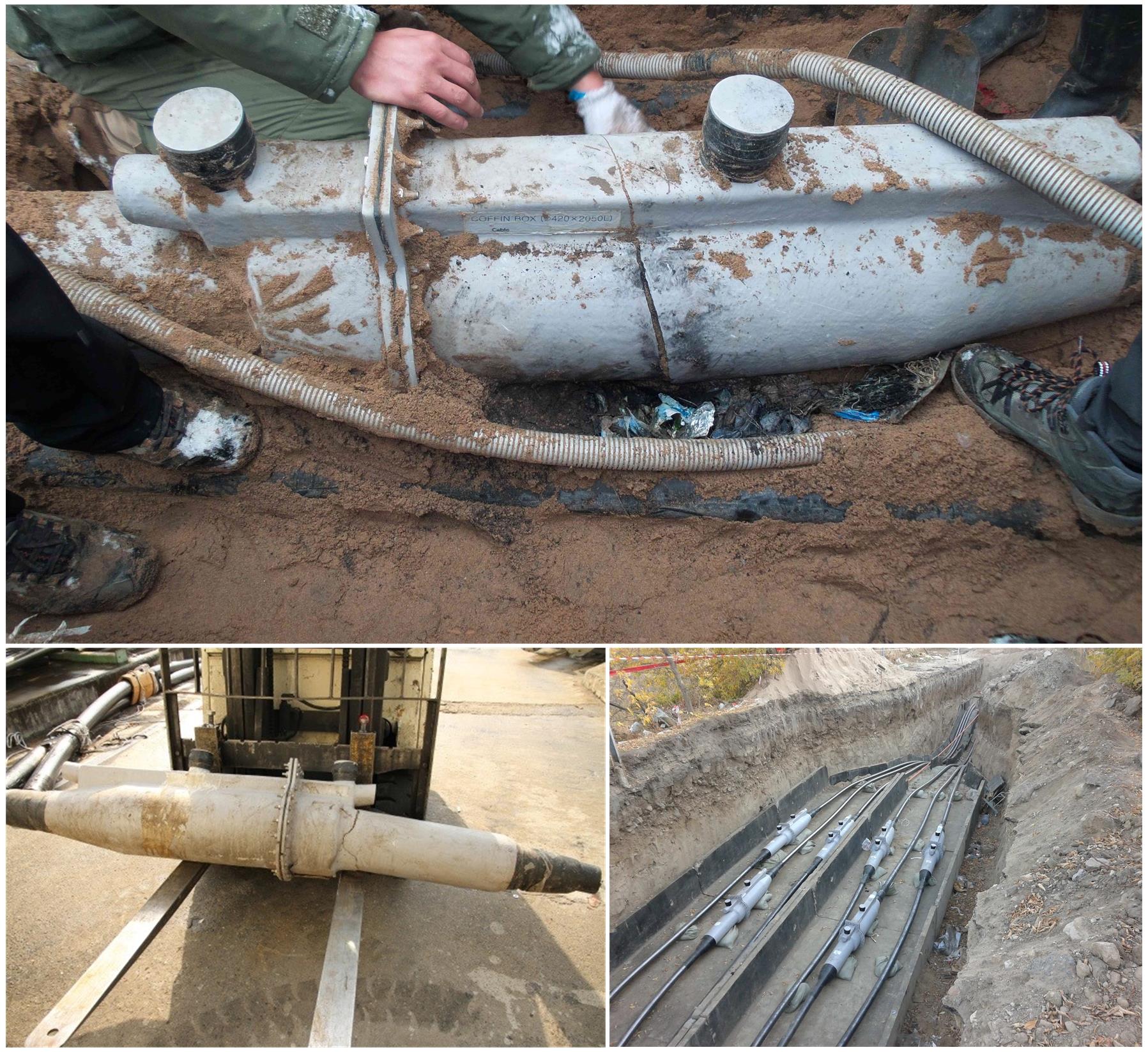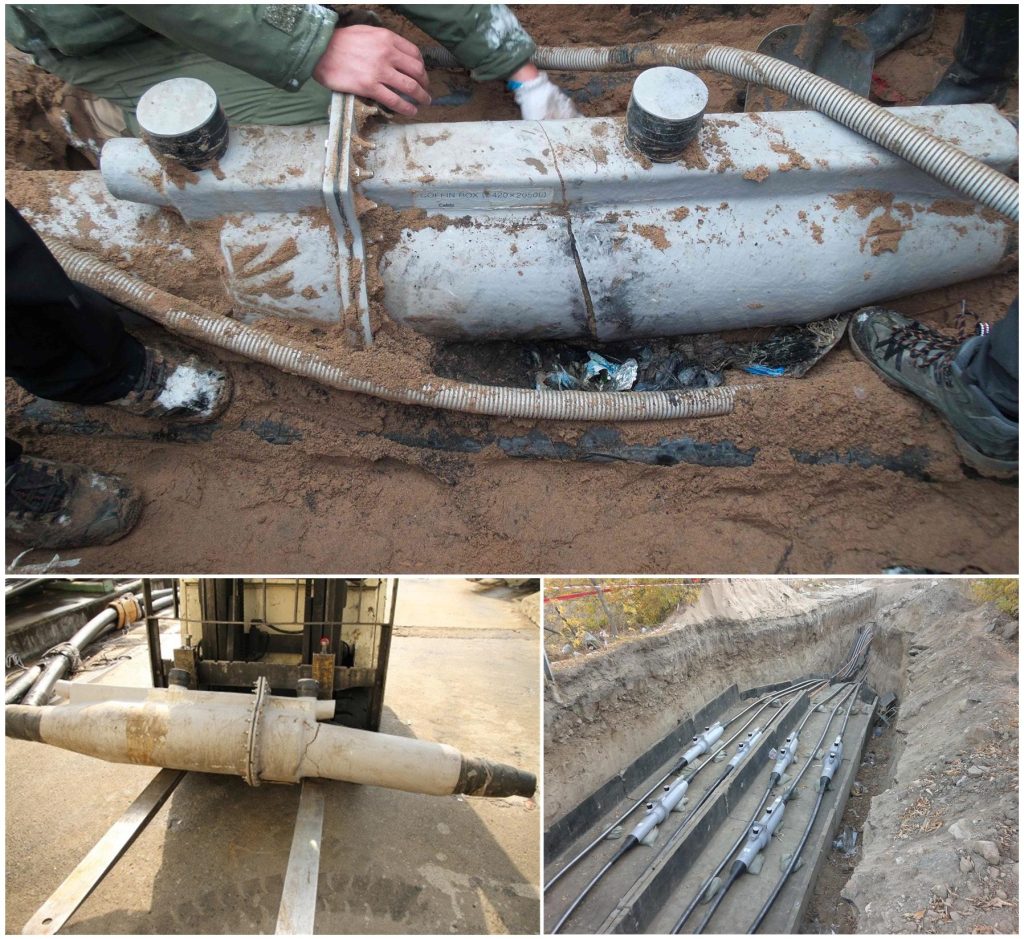
Rules of the placement of cable joints

The photo shows a 220 kV cable line laid in one of the Central Asian countries. During the construction of the line, cables and couplings (joints and terminations) were used of one of the world famous Asian manufacturers. After several years of operation, the cable joints gave faults one by one, and in total more than two dozen joints were damaged. After opening the joints, a breakdown of the stress cone was found in them, but what caused it?
There were several reasons, and one of them, for example, was insufficient protection of the cable line from lightning overvoltages, since the line was mixed, having cable and overhead sections at the same time, but with no metal-oxide surge arresters on transition points. But the main and the most obvious reason was the ingress of moisture into the cable joints from ambient ground. The water was detected after opening the joints.
Water penetration happened due to the fact that joints cracked and became unsealed. It turned out that the joints were stacked on sandbags and could not withstand the ground pressure applied from above. In other words, the joints housings turned out to be inconsistent with the installation conditions that were at the facility. In fact, the cable joints were broken by the pressure of the ground. At the same time, the installation was done by qualified personnel, and most likely with the presence of a representative of the manufacturer.
What conclusions can be drawn?:
1️⃣ Do not 100% trust the manufacturer of the cable and couplings. Even if they are famous, it does not guarantee that they really know and understand all the features of their products.
2️⃣ Joints of cable lines of voltage classes 110 kV and above are forbidden to be laid directly into the ground, and they must be laid on a flat hard surface, preferably in concrete trays.
3️⃣ When the trays are filled with sand, it is important that there is not too much sand. Otherwise, the concrete cover of the tray will press on the cable joint through this sand, although it should have pressed on the concrete walls of the tray with no pressure to joints.Activate to view larger image,
